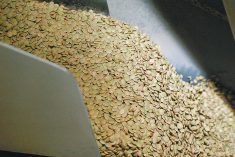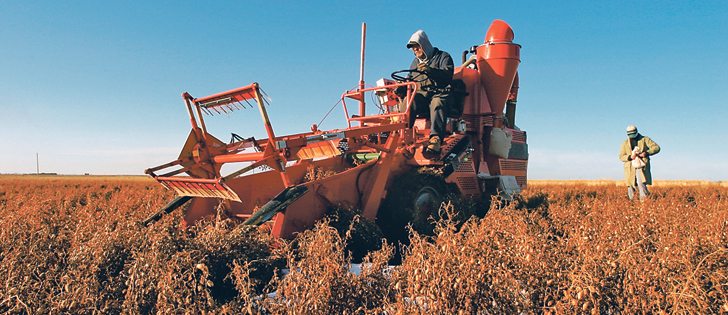India’s announcement that it was slapping duties on lentils and chickpeas had little impact on prices that were already “in the doldrums,” says an analyst.
“The whole thing was anticipated,” said Brian Clancey, editor of Stat Publishing.
“Canadian lentil exports to India had already plunged. The market had died for us.”
India announced on Dec. 21 that it will apply a 30 percent import duty on lentils and chickpeas. Earlier in the fall, it had placed a 50 percent duty on peas.
India is by far the largest buyer of Canadian lentils, purchasing 526,000 tonnes of product through the first 10 months of 2017, or 38 percent of all exports.
Read Also

Flax sector sees omega-3 opportunity
SASKATOON — A global shortage of omega-3 oils could be an opportunity for the flax sector, says an industry official….
“I’m pretty confident carryout will increase. We’re losing a mountain of demand,” said Clancey.
He forecasts 750,000 tonnes of lentil carryout or about four months worth of demand.
“That’s a lot. That’s high,” he said.
Red lentil prices plunged from a high of 57 cents per pound at the end of 2015 to 20 cents per lb. at the end of 2017. They hit rock bottom after Canada’s fumigation exemption from India expired at the end of September.
Clancey said it is odd that India waited more than a month after applying the pea duty to follow suit with lentil and chickpea duties. The timing is especially strange considering India allowed opening season lentil and chickpea shipments from Australia to arrive.
India is awash in pulses due to record rabi and kharif harvests that have driven down prices below government support levels.
And there is another big rabi crop on the way. Stat says farmers are on pace to plant more chickpeas and lentils than last year.
Average yields would produce 9.48 million tonnes of chickpeas and 2.37 million tonnes of lentils, up from last year’s records of 9.33 and 1.22 million tonnes. That could keep a lid on lentil and pea prices for a while.
Clancey is more optimistic about peas than lentils.
“The world can consume way more peas than it does. They are so versatile and that’s the advantage of peas,” he said.
Yellow pea prices initially plunged to $6 per bushel from $8 in the wake of the 50 percent pea duty announcement. It turns out the market was over-reacting. Prices had bounced back to $7.25 by Dec. 21 because farmers weren’t selling at $6 and the livestock and fractionation sectors were willing to pay higher prices for the product.
Despite the new source of demand from the feed sector, Clancey forecasts 950,000 tonnes of pea carryout, up from 301,000 tonnes last year.
The large lentil and pea carryouts will discourage planting of those crops next spring. Clancey expects each crop will lose one million acres.
















